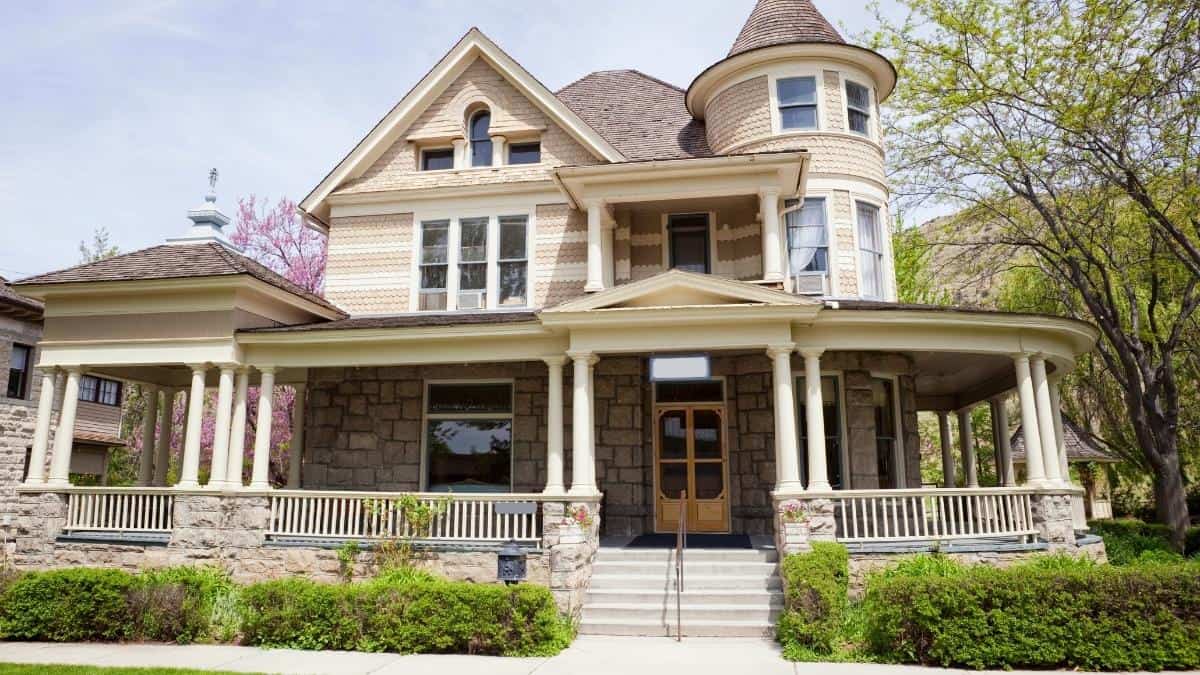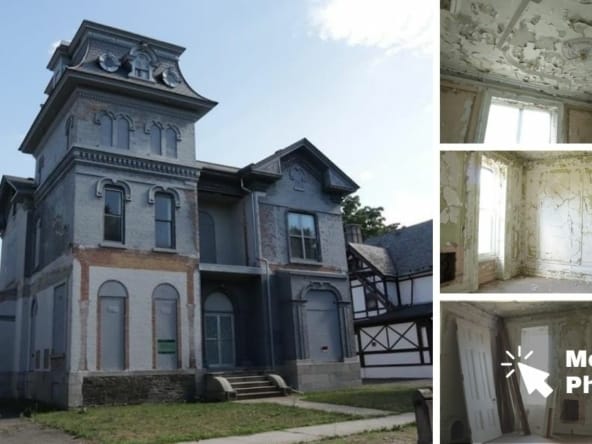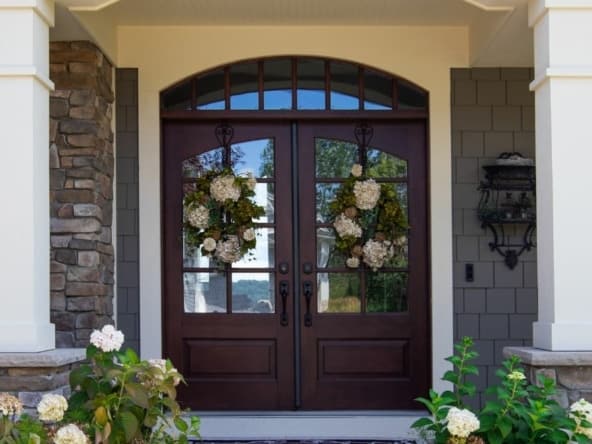The money pit question depends on your answers to the following questions.
First, what kind of houses do you like? Second, do you like unique craftsmanship? Alternatively, shiny new construction waiting for its first occupant? Third, does sleeping in your turret appeal to you?
Finally, do you have a flexible budget for renovations from $50 to $500 per square foot?
Is a Victorian house for you?
Victorian houses were built in the 1820s to early 1900s and have stood the test of time. As a result, they come with unique characteristics that determine their value.
These homes have special features, such as steep roof lines with gables and wraparound porches with bay windows. Mastercraftsmen from the late 18th to early 19th centuries designed and stick-built these homes to last for future generations.
Victorian homes appeal to buyers because of their quirkiness and historical value. These homes also foster a sense of community in established neighborhoods. In addition, they have the added benefit of being located near urban jobs and shopping areas, so biking or walking to work increases their appeal.
Planning a Victorian home restoration requires you to do research and inspection before beginning. An initial assessment will provide an estimate of both the time and money needed to complete the repair. Rules guide updates and exterior upgrades if the home has a ” Historical” classification.
Are Victorian homes money pits compared to new construction?
Available Victorian homes range in price from $279,000 in a renovation project to millions of dollars for a fully restored house. The cash outlay for a pre-buy inspection of the property you are evaluating is money well spent, considering the expense of unexpected restoration work.
An electrical update alone can cost between $6,000 and $25,000.
These homes are available across the United States, with their initial cost reflected by their location and renovation status.
For example, you will pay from 1 to 23 million dollars for a Victorian home in San Francisco when one in upstate New York is on the market at $279,000. Guess which ones need extensive renovation?
Finding contractors with the needed skills is difficult if the house is not in an urban area. In addition, requesting and receiving accurate estimates can be expensive as old houses require specialized knowledge. Finally, contractors must be insured and vetted before employment so money is not lost.
The going rate for new construction is 100 to 200 dollars per square foot. Compare that figure to 50 to 500 for the restoration of a Victorian home. But, of course, both ranges depend on the project’s complexity and the home’s location.
92% of new construction homes are experiencing higher than anticipated costs frequently related to delays. In addition, there can also be conflicts with builders regarding design, early maintenance, and repair issues.
New construction takes place in subdivisions around urban centers. You need dependable transportation so you do not spend your commute on the side of the freeway. When you reach work, commuting means parking. In an urban setting, parking is costly.
Cost of living in a Victorian
Updates to plumbing, wiring, heating, and cooling must occur during the renovation. High costs related to inefficient heating and cooling impact the resale value as well as the cost of maintenance.
In addition, it prevents those nasty little surprises from happening after closing.
Few contractors today work with wooden siding or cedar shingles. Instead, consider updating to vinyl if it is allowed for your Victorian home because it is also more energy efficient.
All upgrades can be completed over time but should be known upfront, so they are projected costs.
The pleasures of living in a Victorian
A well-restored Victorian has a unique look and feel. Eating in the great room and sleeping in the turret are their own distinct experiences.
There will be no confusion about which house is yours. The unique living areas and hidden treasures in each Victorian are part of the fun of having one.
Many Victorians have spent time as multiple living units, so deconstructing them is like solving a mystery. Each wall removal provides a unique experience and the chance for a surprise treasure, from hidden pocket doors to covered staircases.
Many generations have lived in this house, so the chances of hidden gems are high.
Community members will frequently stop and visit to share stories of the house’s history. As the owner, you may discover that your home was once a boarding house. But, on the other hand, visitors may share that it was constructed by a wealthy baron who never lived there.
Purchasing and renovating a Victorian house takes planning and investigation. Unfortunately, people who have found they are money pits were naive in their approach. As a result, some Victorians are beyond the renovation stage if not updated throughout their history.
Final Thoughts
Yes, they can be money pits, however…
Deciding to purchase and renovate a Victorian has to begin with the inspection. Be willing to put the money out upfront to retain the services of a licensed inspector. If the home has good bones, it may be worth the time and expense. This first step will prevent countless “surprise” costs as the renovation occurs.
Do your research regarding supplies and artisans where your Victorian is. If the needed supplies are unavailable or the artisans have never worked on this type of construction, all the money in the world will not help.
Have your list of inspection points in hand. Structure, plumbing, wiring, heat, and air conditioning are items in the evaluation. For example, beautiful hardwood floors will not matter if the basement is full of water.
The purchaser of a Victorian home does so because of the unique characteristics they want to preserve. They want to live in a home that has seen generations come and go while surrounding themselves with a unique, enduring structure. Renovating a Victorian home can be accomplished without becoming a money pit if due diligence is the first step.




